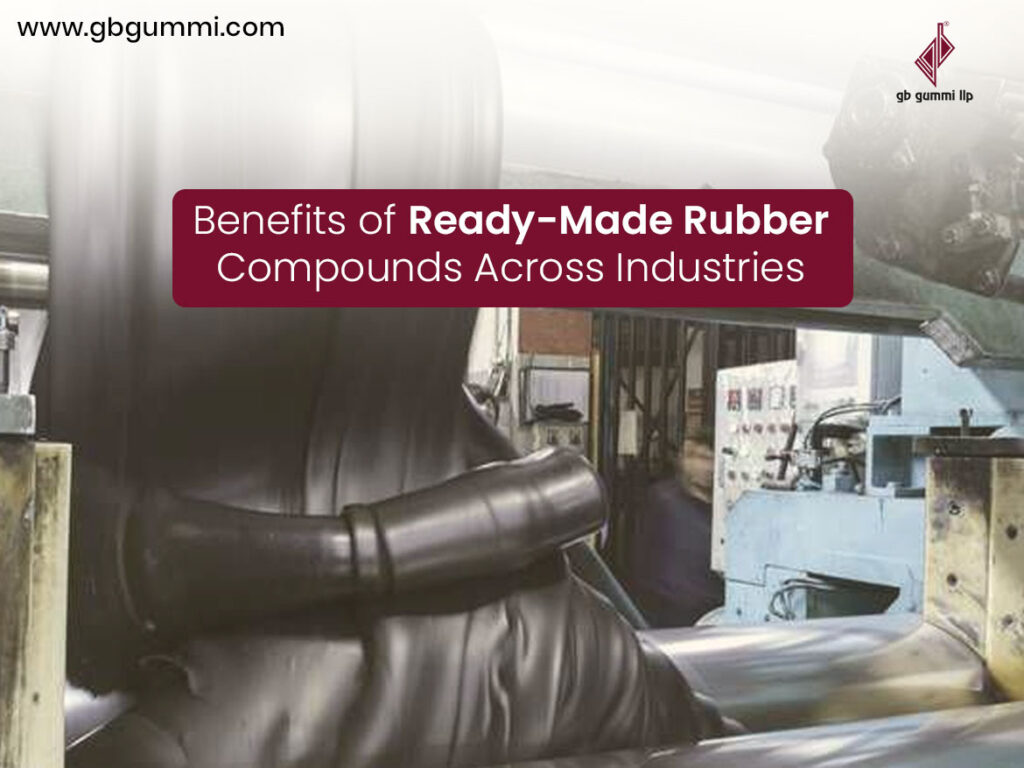If you’ve ever worked around manufacturing, you already know — the material you use can make or break everything. When it comes to rubber, that’s even truer. A compound that performs well once but not the next time? That’s no good for anyone. Which is exactly why more companies now stick with ready-made or custom rubber compounds instead of mixing stuff from scratch every time.
You’ll see these compounds everywhere — from car seals to industrial gaskets — all built to handle heat, pressure, and plain old wear and tear. They’re reliable, and that’s the point.
So yeah, let’s get into what these rubber compounds actually are, how they’re used, and why choosing the right one isn’t just a technical thing — it’s a smart business move.
Understanding Rubber Compounds
At its core, a rubber compound is just a blend — but a really precise one. Think of it like a recipe: a bit of raw rubber (either natural or synthetic), plus fillers, oils, stabilizers, and curing agents. Mix them right and you get the exact balance of stretch, toughness, and resistance you need.
The rubber used in tires? Totally different from what you’d use in food-grade seals or electrical parts. Each type has its own job, which means the “recipe” changes depending on what it’s made for. That’s where custom rubber compounds come in — tweaking things till the material behaves exactly how it should.
What Goes Into It
The mix depends on the end use, but here’s the usual cast of characters:
- Base polymer: Natural rubber, SBR, EPDM, or nitrile — each one’s got its own perks.
- Fillers: Carbon black, silica, clay — basically what gives the rubber its backbone.
- Plasticizers and softeners: Make it flexible, easier to shape.
- Antioxidants and stabilizers: Keep it from breaking down under heat or UV.
- Vulcanizing agents: Sulphur and accelerators that “set” the rubber when it’s cured.
Every single part is measured carefully, because a little too much of one ingredient and the final product could turn out too stiff, too soft, or just plain wrong.
Common Types
Here’s a quick cheat sheet:
| Natural Rubber | Strong against wear, used a lot in car parts |
| SBR (Styrene Butadiene) | Flexible, bouncy, good all-rounder. |
| EPDM | Great for weather-resistant tasks like roofing, seals, outdoor use |
| Nitrile | Resistant to oil and fuel, perfect for gaskets and hoses. |
| Silicone | Handles extreme temperatures, stays soft and clean, ideal for medical and food gear. |
Different blends for different needs, pick the wrong one and you’ll know it fast.
Why They’re So Reliable
The beauty of rubber compounding is that you can tune it like a guitar. Need more elasticity? Change the polymer. More heat resistance? Add the right fillers. A few of the things you can get right with a good compound:
- Bends and flexes even in the cold
- Tough enough for abrasion and tearing
- Stable under heat and chemicals
- Good insulation when you need it
- Lasts outdoors without cracking or chalking
That’s why nearly every big industry, automotive, construction, electrical, consumer goods — leans on rubber compounds for consistent performance.
Where It’s Used
Rubber compounds show up almost everywhere:
- Automotive: Tires, seals, hoses, vibration mounts.
- Construction: Expansion joints, waterproof membranes, shock pads.
- Electrical: Cable covers and insulation layers.
- Consumer Goods: Shoe soles, jar seals, grips.
- Industrial Equipment: Conveyor belts, machine gaskets, protective layers.
The cool part? Using custom rubber compounds saves a ton of time. No endless testing, no wasted raw material — just dependable results batch after batch.
How It’s Made
The process is surprisingly methodical:
- Mixing: Everything’s blended in mills or mixers till it’s uniform.
- Mastication: The rubber’s softened and worked till it’s pliable.
- Curing (Vulcanization): Heat and sulfur create that springy, durable texture.
- Testing: Each batch gets tested for hardness, stretch, compression, and all that.
That’s how manufacturers keep the results consistent — same performance, no matter where it’s used.
The Big Benefits
Let’s be real, ready-made or custom compounds just make life easier:
- Consistency: No random variations, no bad batches.
- Saves Time & Money: You skip the R&D grind and get straight to production.
- Performance Control: Hardness, color, chemical resistance, tweak it as you like.
- Less Waste: Pre-tested, pre-balanced recipes mean fewer throwaways.
- Longer Product Life: Engineered to survive tough environments.
- Faster Production: No waiting around for lab tests every time.
If you’re dealing with rubber manufacturers or component suppliers, that’s a big deal, fewer headaches, smoother output.
Why It Actually Matters
Rubber seems simple, but it’s not. Behind every gasket or seal, there’s chemistry, precision, and a ton of testing. The right compound doesn’t just perform better; it keeps you compliant with standards — automotive, industrial, even FDA for food applications.
At the end of the day, rubber compounding is the bridge between raw material and the real world. It’s what turns gooey rubber into a hardworking part that lasts.
Getting Reliable Compounds
If you’re looking for solid, high-quality rubber compounds, you need people who know what they’re doing.
That’s where GB Gummi India comes in. They’ve been one of India’s trusted rubber sheet manufacturers for years, offering custom blends built around SBR, EPDM, and nitrile. Everything’s blended with precision, checked thoroughly, and delivered on time — exactly what you want when your production line can’t afford downtime.
They know materials. More importantly, they know how to make them perform.
Wrapping It Up
Whether you’re in automotive, construction, or electronics, the right rubber compound quietly holds everything together. Ready-made and custom rubber compounds aren’t just convenient — they give you stability, consistency, and one less thing to worry about.
And if you want a partner who gets both the science and the business side of it, GB Gummi India is worth talking to.

